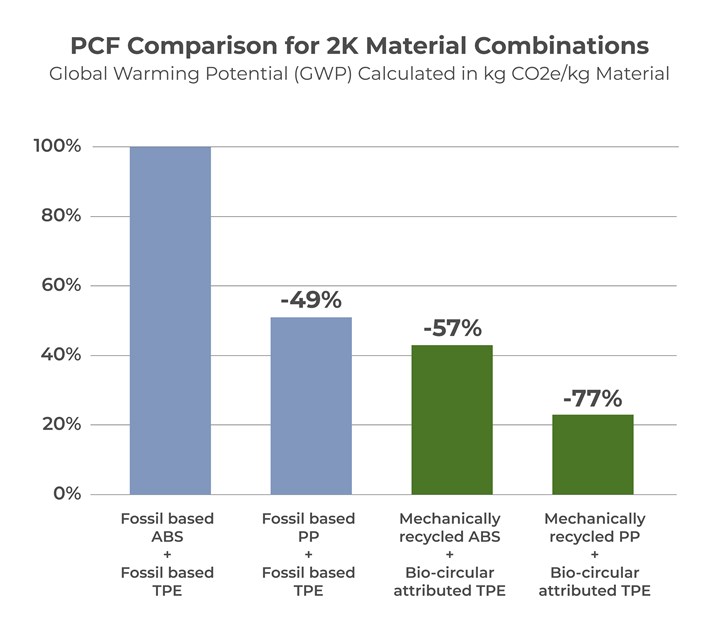More Sustainable Two-Component Overmolding
Swedish compounders HEXPOL TPE AB and Polykemi AB have collaborated on a 2K sustainable development project for consumer products.
HEXPOL TPE and Polykemi have collaborated on material combinations for multicomponent injection molding based on the resins’ properties and sustainability qualities. The companies’ goals included demonstrating the possibilities in reducing the product carbon footprint, while increasing recyclability and optimizing adhesion.
The compounders documented the cradle-to-gate Product Carbon Footprints (PCF) and Global Warming Potential (GWP) per kg of material. The PCF data shows that switching from a combination using fossil fuel based ABS from Polykemi, that is overmolded with a fossil fuel based TPE from HEXPOL TPE, to a recycled PP and TPE with bio-circular attributed content, can result in a 77% reduction in carbon dioxide emissions. The companies say this combination can also provide end-of-life and recycling compatibility advantages.
Combinations using mechanically recycled ABS with bio-circular attributed TPE were also tested, resulting in a 57% reduction in carbon dioxide emissions compared to the fully fossil-based equivalents. The TPE has bio-circular attributed content via the mass balance principle from 2nd generation feedstocks.

HEXPOL TPE and Polykemi have collaborated to determine maximum carbon reduction possibilities for overmolding PP with TPE.
Photo Credit: HEXPOL TPE and Polykemi
Related Content
-
Tederic Promotes High Technology, Broader Market Presence
Four cells are running in its booth including a 1,300-ton multimaterial system highlighting its 2K capabilities.
-
Fakuma 2023: Wittmann Battenfeld Expands All-Electric Line, Direct-Current Capabilities
Wittmann Battenfeld will introduce the new EcoPower B8X injection molding machine line and show direct current as an energy source for a concept machine that will power its own robot.
-
Coinjection Technology Showcases Recycled Material Containment
At Fakuma, an all-electric PXZ Multinject machine sandwiches a black core made of mechanically recycled PC/ABS within an outer layer made of chemically recycled ABS.


